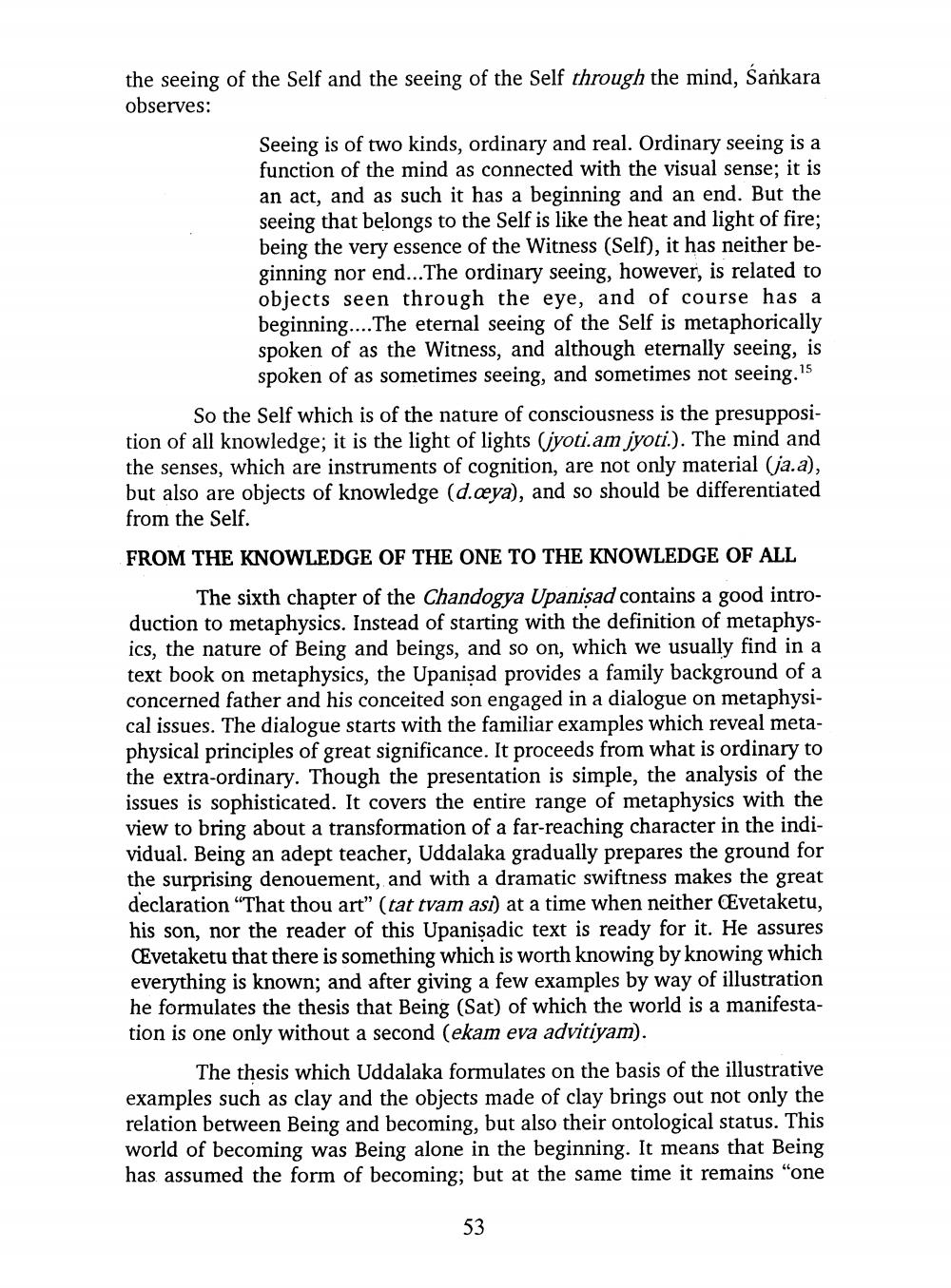________________
the seeing of the Self and the seeing of the Self through the mind, Sankara observes:
Seeing is of two kinds, ordinary and real. Ordinary seeing is a function of the mind as connected with the visual sense; it is an act, and as such it has a beginning and an end. But the seeing that belongs to the Self is like the heat and light of fire; being the very essence of the Witness (Self), it has neither beginning nor end... The ordinary seeing, however, is related to objects seen through the eye, and of course has a beginning.... The eternal seeing of the Self is metaphorically spoken of as the Witness, and although eternally seeing, is
spoken of as sometimes seeing, and sometimes not seeing.15 So the Self which is of the nature of consciousness is the presupposition of all knowledge; it is the light of lights (jyoti.am jyoti.). The mind and the senses, which are instruments of cognition, are not only material (ja.a), but also are objects of knowledge (d.cya), and so should be differentiated from the Self.
FROM THE KNOWLEDGE OF THE ONE TO THE KNOWLEDGE OF ALL
The sixth chapter of the Chandogya Upanisad contains a good introduction to metaphysics. Instead of starting with the definition of metaphysics, the nature of Being and beings, and so on, which we usually find in a text book on metaphysics, the Upanisad provides a family background of a concerned father and his conceited son engaged in a dialogue on metaphysical issues. The dialogue starts with the familiar examples which reveal metaphysical principles of great significance. It proceeds from what is ordinary to the extra-ordinary. Though the presentation is simple, the analysis of the issues is sophisticated. It covers the entire range of metaphysics with the view to bring about a transformation of a far-reaching character in the individual. Being an adept teacher, Uddalaka gradually prepares the ground for the surprising denouement, and with a dramatic swiftness makes the great declaration "That thou art" (tat tvam asi) at a time when neither Evetaketu, his son, nor the reader of this Upanisadic text is ready for it. He assures
Evetaketu that there is something which is worth knowing by knowing which everything is known; and after giving a few examples by way of illustration he formulates the thesis that Being (Sat) of which the world is a manifestation is one only without a second (ekam eva advitiyam).
The thesis which Uddalaka formulates on the basis of the illustrative examples such as clay and the objects made of clay brings out not only the relation between Being and becoming, but also their ontological status. This world of becoming was Being alone in the beginning. It means that Being has assumed the form of becoming; but at the same time it remains "one
53




